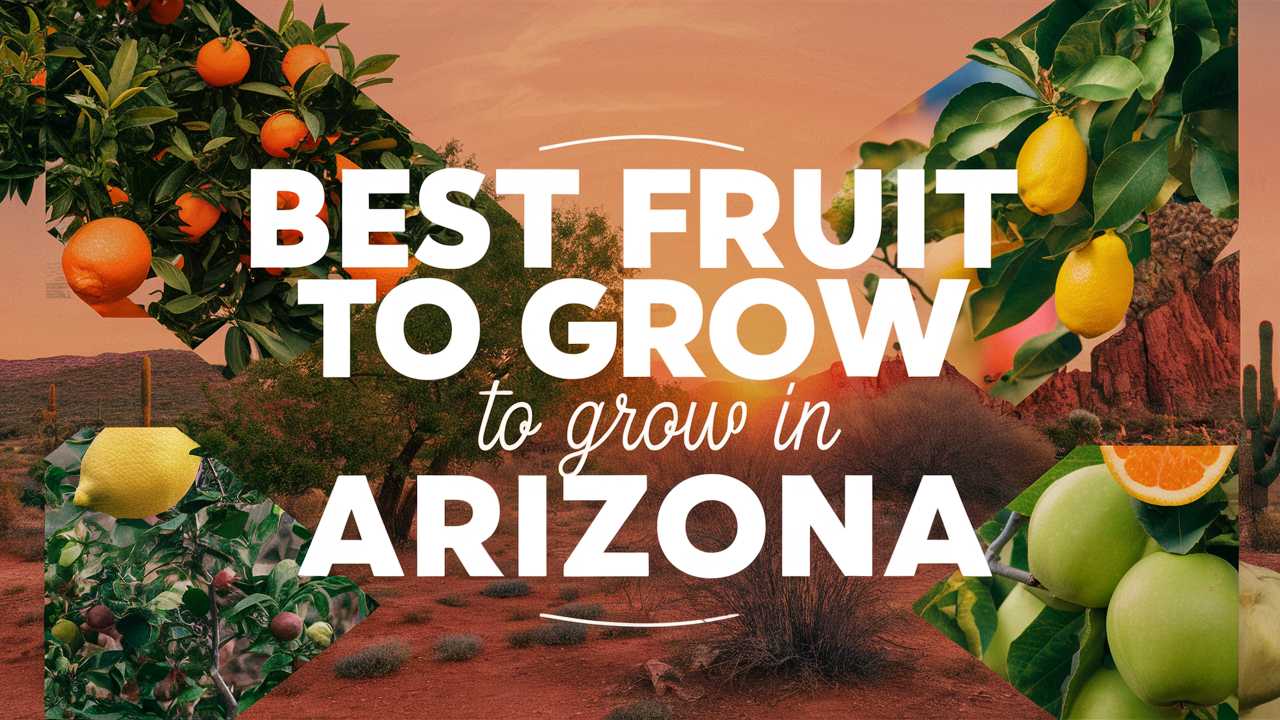In this guide, we will explore the best fruit trees to grow in Arizona, detailing their ideal growing conditions, suitable varieties, and specific challenges or advantages that come with each type. Armed with this knowledge, you can cultivate a fruitful oasis tailored to Arizona’s unique environment.
Apple
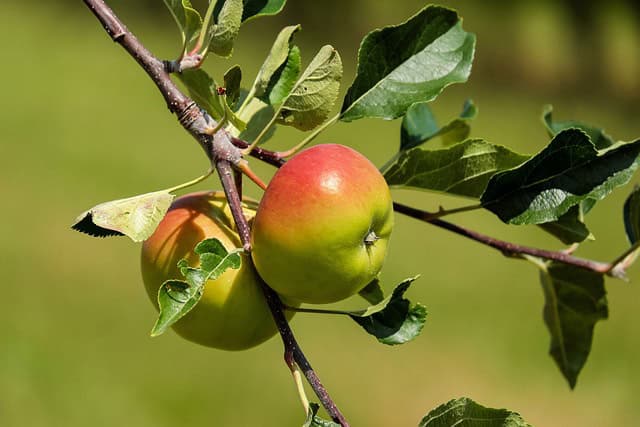
Apples are one of the most beloved fruits globally, and they can thrive in Arizona’s climate with the right selection of varieties. Apples are well-adapted to many garden settings, producing crisp, juicy fruits ideal for fresh eating or baking. These trees also offer beautiful blossoms in spring, providing aesthetic value to your landscape. However, it’s crucial to pick varieties with lower chilling hour requirements, as traditional varieties may not do well in warmer areas.
Best Varieties for Arizona:
The most suitable apple varieties for Arizona include ‘Anna,’ ‘Dorset Golden,’ and ‘Fuji.’ These varieties are known for their adaptability to the warmer temperatures and lower chilling hour requirements.
Growing Conditions:
Apples typically thrive in areas with well-drained soils and full sun. In Arizona, it’s essential to provide adequate irrigation, especially during the hot summer months. Choosing a spot that has good air circulation can also help minimize disease issues that affect apple trees. Mulching around the base of the tree can help retain moisture and regulate soil temperature, providing the apple tree with a stable environment to flourish.
Chill Hours:
Apples require a certain number of chill hours (hours below 45°F) to produce fruit. While most apple varieties require between 400-1,000 chill hours, the selected varieties for Arizona need only about 300 chill hours, making them suitable for the warmer regions of the state.
Pear
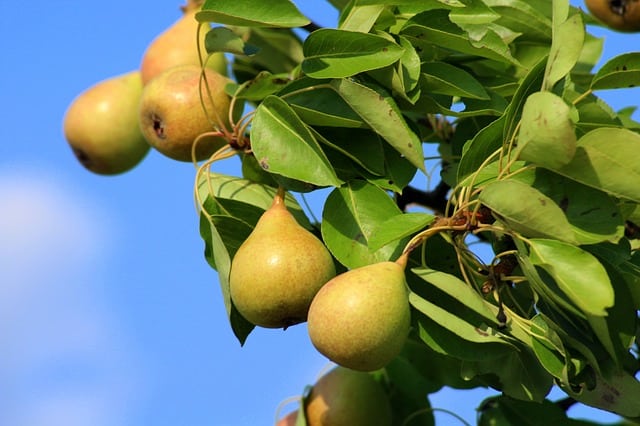
Pears are another excellent choice for Arizona gardeners, known for their sweet, juicy flavor and crisp texture. Not only are they delicious to eat fresh, but they can also be used in cooking and baking, making them a versatile addition to your fruit tree lineup. Pear trees adapt well to the desert environment, offering a classic fruit that can withstand the state’s arid climate while providing beautiful spring blooms.
Best Varieties for Arizona:
The most recommended pear varieties include ‘Pineapple,’ ‘Bartlett,’ and ‘Bosc.’ These pear trees can endure the heat while providing sweet, juicy fruits that are perfect for fresh eating or cooking.
Growing Conditions:
Like apples, pears prefer well-draining soil and full sunlight. They adapt well to the arid climate of Arizona and a drip irrigation system can efficiently manage their water supply, reducing waste and ensuring deep root growth. It’s important to prune them annually to maintain shape and encourage fruiting.
Chill Hours:
Pear trees generally require between 300 to 800 chill hours, depending on the variety. The ‘Pineapple’ pear, for example, is well-suited for the low desert with its low chilling requirement.
Apricots

Apricots are a delightful addition to the Arizona landscape, offering a balance of beautiful blooms and flavorful fruits. Known for their sweet, slightly tart flavor, apricots are excellent for fresh eating, canning, and cooking. These trees are relatively low-maintenance and do well in the desert climate, making them an attractive choice for many gardeners looking to diversify their fruit tree collection.
Best Varieties for Arizona:
For optimal growth, consider planting ‘Tilton’ or ‘Katy’ apricots. Both are known for their high yields and disease resistance, making them suitable for home gardeners.
Growing Conditions:
Apricots prefer full sun and well-drained soils, making them perfect for Arizona’s landscape. They are particularly sensitive to soil moisture levels, so it’s crucial to monitor irrigation carefully. They benefit from a sandy or loamy soil mix, which helps prevent root rot. Regular pruning during the dormant season can promote better air circulation and fruiting.
Chill Hours:
Apricot trees generally require about 300 to 700 chill hours, making them suitable for many urban areas in the low desert. However, it is important to ensure that they receive adequate chilling during the winter months for optimal fruit production.
Peaches
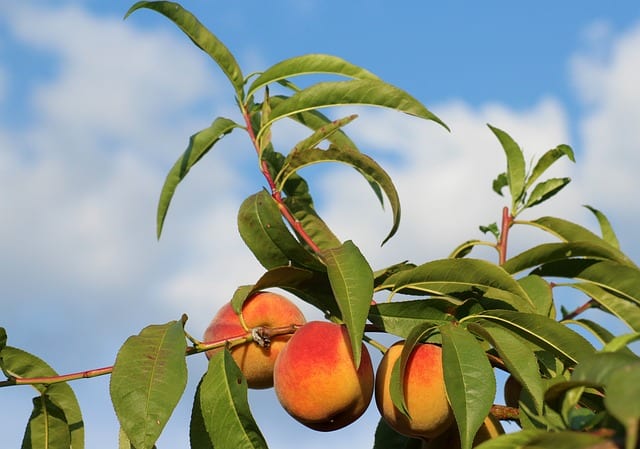
Peach trees are cherished for their delicious, juicy fruits that offer a taste of summer with every bite. They are versatile fruits used in desserts, salads, and smoothies. In Arizona, peaches can flourish in both high and low desert areas, provided you choose the right varieties that can withstand intense heat. Their showy blossoms also add beauty to the landscape in spring.
Best Varieties for Arizona:
The ‘Desert Gold’ peach is an outstanding choice for Arizona’s hotter climates. It’s an early-bearing variety with a low chilling requirement. Other notable varieties include ‘Florida Prince’ and ‘Rising Star.’
Growing Conditions:
Peach trees thrive in loamy, well-drained soil and need ample sunlight. Implementing a drip irrigation system will help manage water effectively without soaking the roots. They can also benefit from a 2-3 inch layer of mulch to keep the soil cool and moist. Regular pruning encourages healthy growth and fruit production.
Chill Hours:
Most peach varieties need around 300-600 chill hours. The ‘Desert Gold’ variety requires only about 300 hours, making it a perfect candidate for low desert areas.
Persimmons
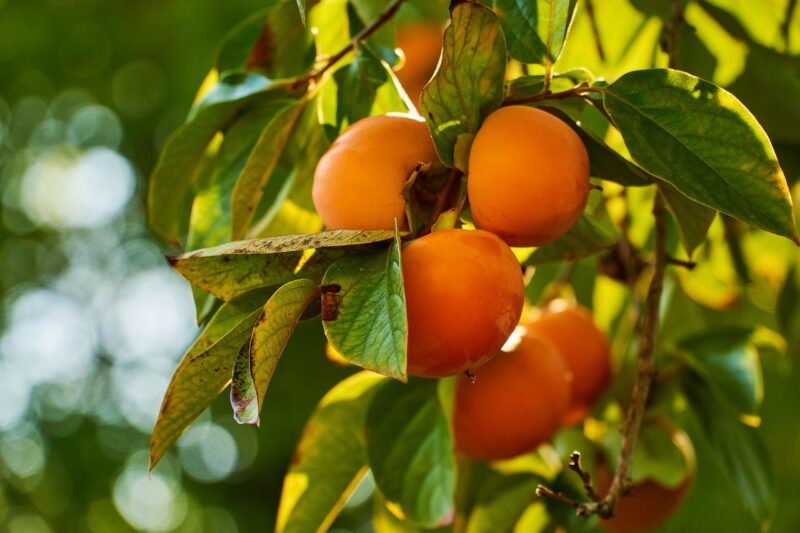
Persimmons are an exotic fruit that brings a unique flavor and texture to the garden scene. Known for their deliciously sweet and honey-like taste, these fruits can be eaten fresh, dried, or used in cooking. Persimmons are well-suited for Arizona’s warmer climates, thriving with minimal care and water once established.
Best Varieties for Arizona:
The ‘Fuyu’ and ‘Hachiya’ persimmons are among the best choices. ‘Fuyu’ is a non-astringent variety that can be eaten while still firm, while ‘Hachiya’ must be fully ripe to avoid an unpleasant astringent flavor.
Growing Conditions:
These trees love full sun and well-drained, sandy loam soils. They are drought-tolerant once established, which makes them suitable for Arizona’s dry conditions. It’s essential to plant them where they can receive some winter protection, as young trees are susceptible to frost.
Chill Hours:
Persimmons do not require many chill hours (about 100-500), making them well-adapted to both low and high desert environments.
Plum
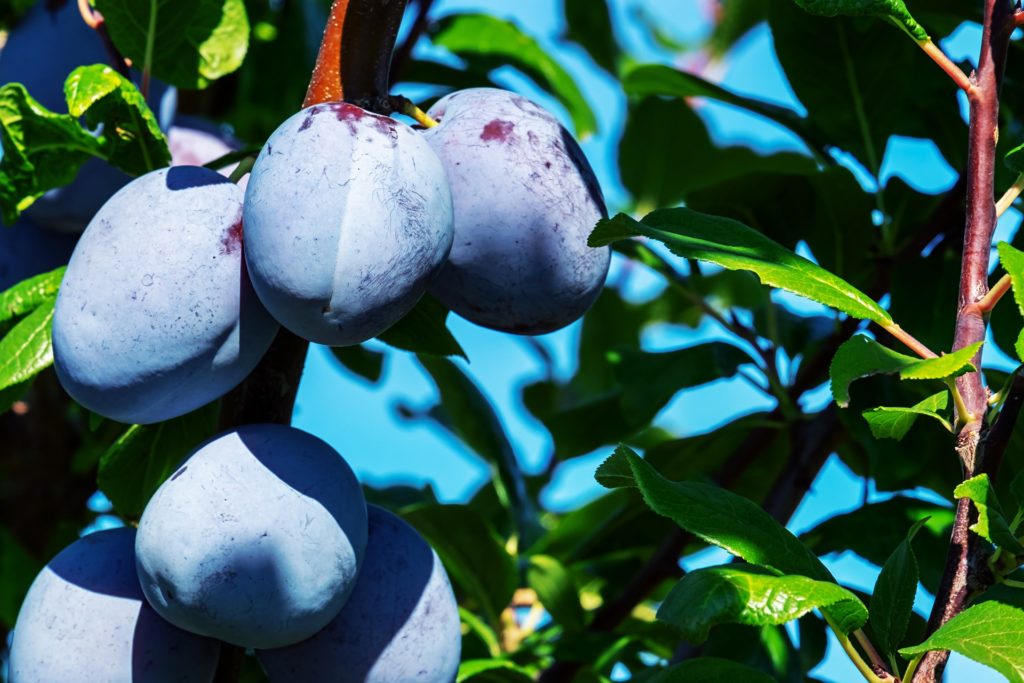
Plum trees add vibrant color to the landscape with their brilliant blooms and delicious fruits. Versatile in use, plums can be enjoyed fresh, dried as prunes, or transformed into sauces and jams. Growing plums in Arizona can be very rewarding, especially when selecting varieties that are best suited for the region’s climate.
Best Varieties for Arizona:
‘Santa Rosa’ and ‘Methley’ plums are recommended for Arizona as they are more resilient to heat and can produce fruit with fewer chill hours.
Growing Conditions:
Plum trees prefer full sun and sandy, well-draining soil. Water regularly, especially during the establishment phase, to promote strong root development, but avoid overwatering to prevent root rot. Pruning after harvest encourages good fruit production for subsequent seasons.
Chill Hours:
Plum trees generally require around 300-700 chill hours. The ‘Methley’ variety is well-suited for warmer regions with lower chill hour requirements.
Asian Pear

Asian pears are unique in their texture and flavor, often resembling apples but with a much crisper texture. Known for their refreshing sweetness, they are fantastic fresh and can also be used in salads or desserts. Asian pears can thrive in Arizona’s climate as long as the right care and conditions are provided.
Best Varieties for Arizona:
The ‘Shinseiki’ and ’20th Century’ varieties are fantastic choices due to their low chilling requirements and adaptability, making them suitable for the state’s climate.
Growing Conditions:
They enjoy well-drained soil and full sun. Proper irrigation, especially during the first few years, is crucial in establishing a healthy tree. Fertilizing with a balanced fertilizer in early spring can boost fruit development and overall health.
Chill Hours:
Asian pear trees typically need about 300-500 chill hours, making them ideal for Arizona’s climate.
Cherry

Cherries can be a challenge to grow in Arizona due to their significant chilling requirements, but with care, they can thrive beautifully. Known for their sweet or tart flavor, cherries are a staple in desserts and can also be enjoyed fresh. If you’re ready to take on the challenge of growing cherries, a little extra planning can yield rewarding results.
Best Varieties for Arizona:
Consider planting ‘Bing’ or ‘Stanley’ cherries, which do best in the higher elevations of the state, where chill hours are sufficient.
Growing Conditions:
Select a location with well-drained, slightly acidic soils, as cherries cannot tolerate waterlogged roots. They prefer full sun but benefit from some afternoon shade during the hottest months to protect fruit development.
Chill Hours:
Most sweet cherry varieties need 800 hours or more, while sour cherries require fewer hours, around 500. Be mindful when selecting cherries for your garden, ensuring your area can meet these chilling needs.
Olives
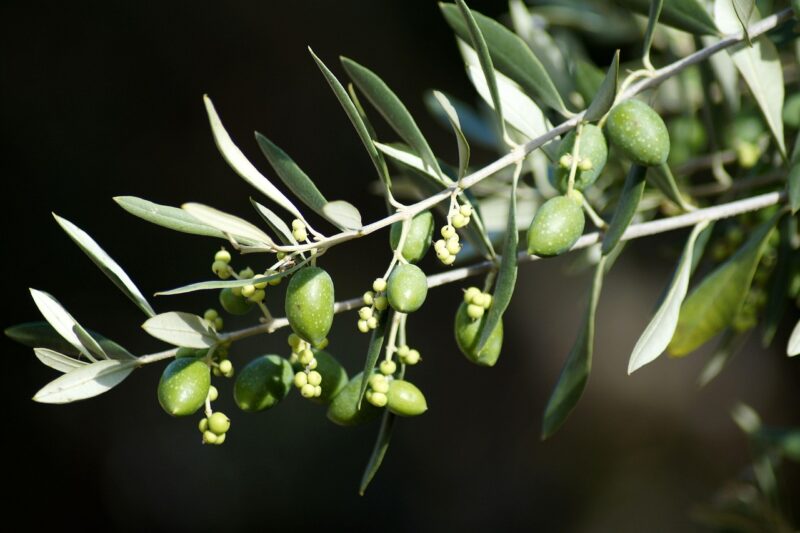
Olive trees are a smart addition to an Arizona garden, capable of withstanding drought and heat remarkably well. Known for their healthy oil and unique taste, olives can be used in cooking, preserved, or even enjoyed fresh. Their gnarled trunks and silvery leaves also bring an attractive aesthetic to the landscape.
Best Varieties for Arizona:
Look for ‘Arbequina’ or ‘Manzanilla’ varieties, as they are well-adapted to hot, dry conditions and provide high yields.
Growing Conditions:
Olive trees thrive in well-drained soils with minimal water. Establishing these trees in areas with full sun ensures that they produce fruit efficiently. They are very resilient but will benefit from occasional deep watering during fruit development.
Chill Hours:
Olive trees have a low chill hour requirement, typically around 300 hours, making them suitable for both desert zones.
Quince
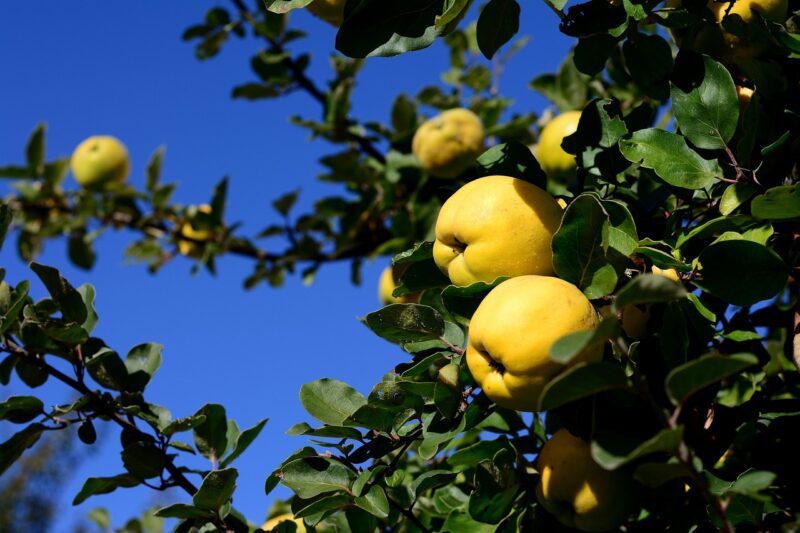
Quince is a lesser-known fruit that produces fragrant fruits perfect for cooking and preserves. Their unique flavor and aroma make them a great addition to jams, jellies, and desserts. Quince trees are relatively easy to maintain and can flourish in Arizona with some careful planning.
Best Varieties for Arizona:
‘Pineapple’ quince is well-regarded for its exceptional quality and high yield, making it an excellent choice for home gardeners.
Growing Conditions:
Quince trees prefer well-draining soil and full sun exposure. They need enough moisture to establish themselves but become drought-tolerant as they mature. Regular pruning helps maintain shape and encourages more prolific fruiting.
Chill Hours:
Quince typically requires about 400-800 chill hours, which suits areas with cooler winters within Arizona.
Paw Paw
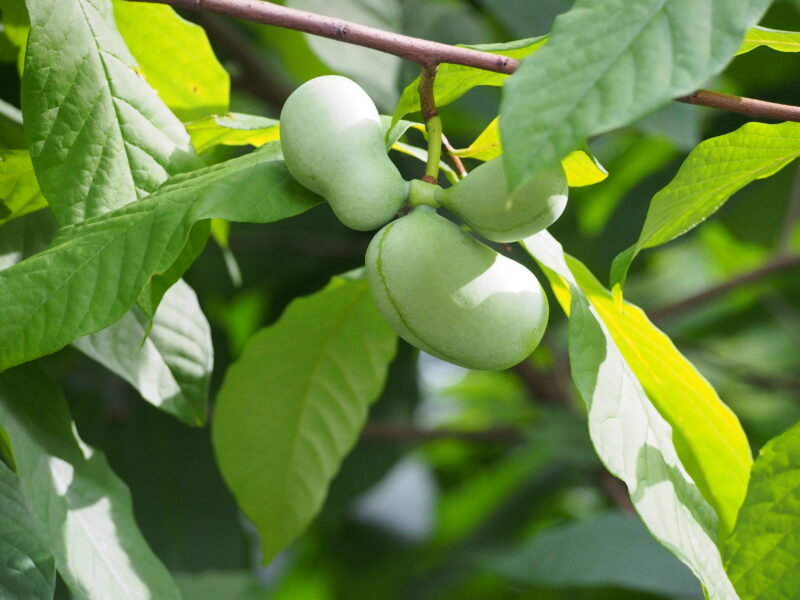
Paw paw trees are a unique addition to any Arizona garden, producing creamy, custard-like fruits that are rich in flavor. While these trees typically thrive in more humid climates, certain varieties can adapt with the right care in Arizona. Growing paw paws not only diversifies your fruit selection but also introduces a rare treat for your palate.
Best Varieties for Arizona:
While these trees typically thrive in more humid climates, ‘Sunflower’ and ‘Shenandoah’ varieties can adapt with careful management and microclimate considerations in Arizona’s more temperate areas.
Growing Conditions:
Paw paws prefer rich, moist, well-draining soils, and they appreciate some shade from the harsh afternoon sun. Ensuring that their root zone remains consistently moist, especially during dry spells, will encourage healthy growth.
Chill Hours:
Paw paws require around 400-600 chill hours, making them a possibility for higher elevation areas in Arizona.
Fig
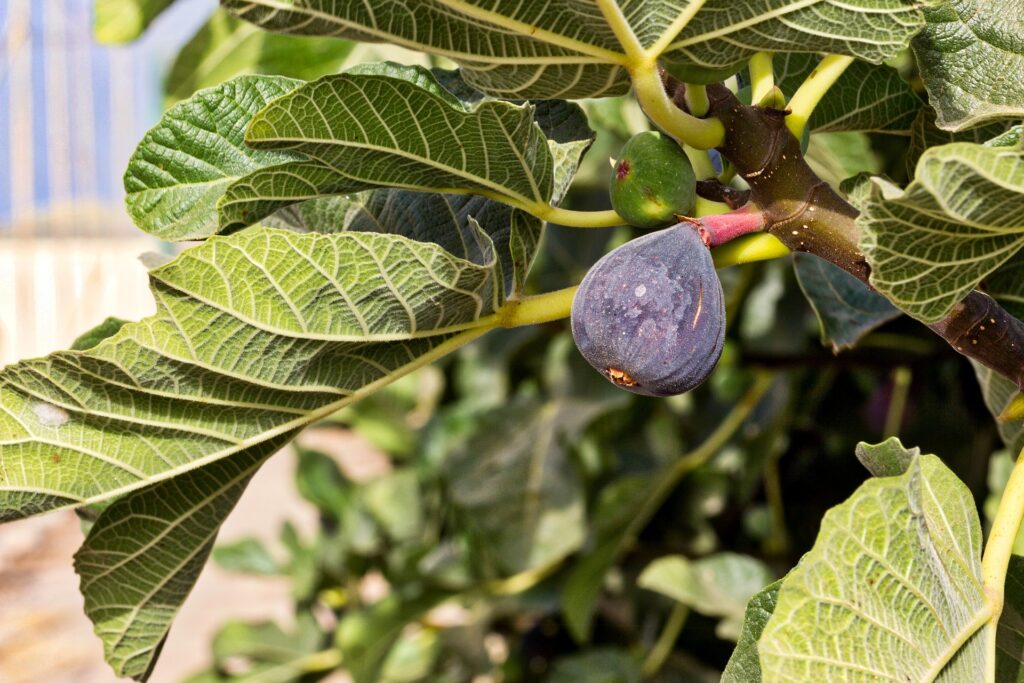
Fig trees are a fantastic choice for Arizona, as they thrive in hot, dry environments and provide sweet fruits that are simply irresistible. Figs have a lush foliage that can add a tropical vibe to your garden and require minimal care once established. Fresh figs have a unique flavor, while dried figs are a nutritious snack and a great addition to various recipes.
Best Varieties for Arizona:
Consider the ‘Brown Turkey’ or ‘Kadota’ figs, both of which are hardy and prolific in producing sweet fruits.
Growing Conditions:
Figs prefer well-draining sandy or loamy soils and full sunlight. They are drought-tolerant once established but appreciate regular watering during fruit development. Additionally, moderate pruning can help manage size and enhance airflow.
Chill Hours:
Most fig varieties require minimal chill hours, typically around 100-300 hours, making them ideal for Arizona’s climate.
Date Palm
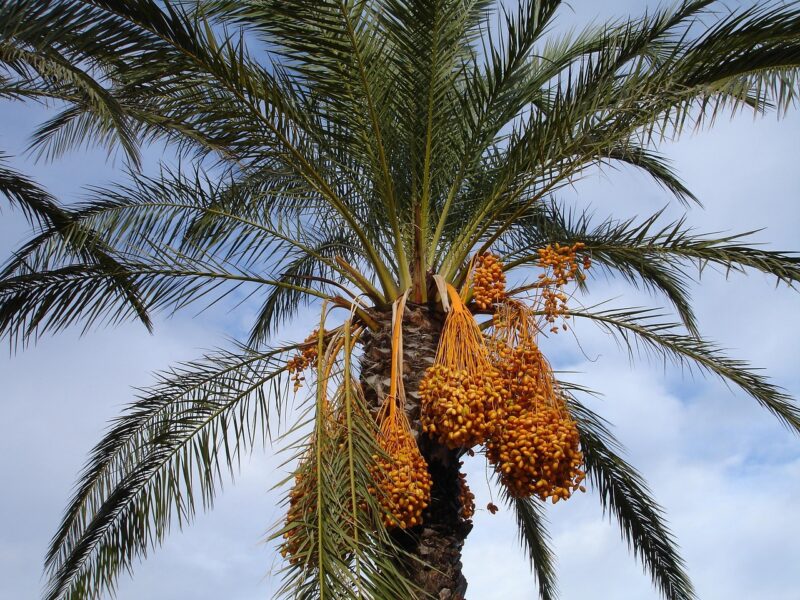
Dates are a natural fit for the Arizona landscape, especially in desert areas where they flourish. Known for their rich taste and high nutritional value, date palms thrive in sunny climates and require minimal water once they’re established. These majestic trees can also add an exotic touch to your garden.
Best Varieties for Arizona:
‘Medjool’ and ‘Deglet Noor’ are popular for home gardens, known for their sweet taste and high yields.
Growing Conditions:
These palms thrive in sandy, well-drained soil and require plenty of sunlight. They are highly drought-tolerant but benefit from supplemental irrigation during fruit development; however, they need to avoid excess moisture to prevent root rot.
Chill Hours:
Date palms have a low chill hour requirement, making them perfect for Arizona’s hot conditions, often requiring less than 300 hours to produce fruit efficiently.
Orange
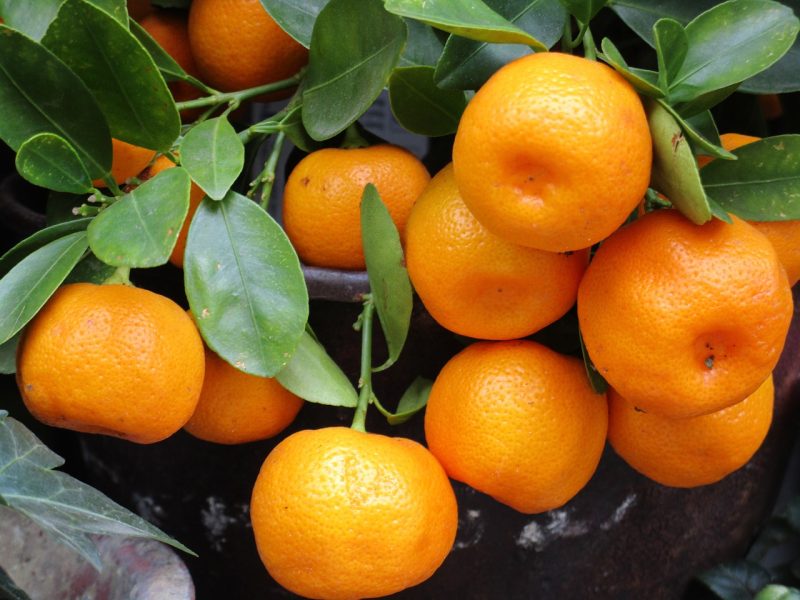
Oranges are one of the most beloved fruit trees, prized for their sweetness and versatility in culinary applications. Fresh orange juice, marmalades, and salads all benefit from homegrown oranges. In Arizona, oranges can flourish in both low and high desert environments, offering a fresh, citrusy taste that is a crowd-pleaser.
Best Varieties for Arizona:
‘Valencia’ and ‘Navel’ oranges are highly recommended for the state’s climate, offering well-timed harvests that allow you to enjoy fresh fruit throughout the season.
Growing Conditions:
Oranges thrive in well-drained loamy soils with full sunlight, much like other citrus trees. They require consistent moisture, especially during peak growth periods, so regular irrigation is important. Additionally, removing fallen fruit and leaves can help prevent disease.
Chill Hours:
Citrus trees, including oranges, require around 300-400 chill hours, making them well-suited for both low and high desert areas.
Lemon
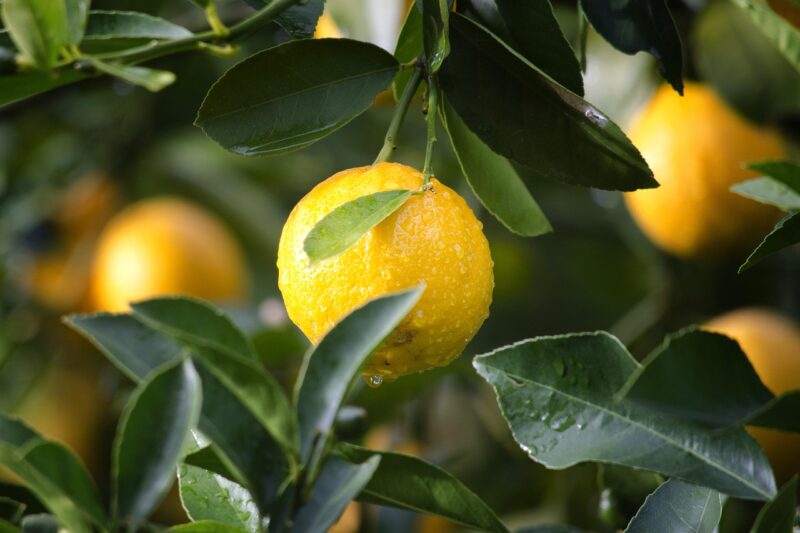
Lemons are another citrus tree that loves Arizona’s hot sun and can produce fruit year-round. With their bright, tangy flavor, lemons are indispensable in the kitchen, used in everything from beverages to savory dishes. These trees can easily adapt to Arizona’s climate, bringing vibrant flavor and an aromatic zest to your garden.
Best Varieties for Arizona:
‘Improved Meyer’ and ‘Eureka’ are well-adapted to high desert areas and produce flavorful lemons with prolific yields.
Growing Conditions:
Lemon trees prefer well-draining soils and full sunlight, similar to other citrus varieties. Regular watering is essential, especially in the hot summers, to ensure healthy fruit production. Mulching can help retain moisture and reduce temperature fluctuations around the roots.
Chill Hours:
Lemon trees also require about 300-400 chill hours, aligning well with Arizona’s climate requirements.
Low Desert and High Desert
Arizona’s climate can be divided into two primary categories—low desert and high desert.
In the low desert areas, temperatures can soar during summer, often exceeding 100°F, while winter temperatures can be milder, allowing for subtropical fruit varieties to thrive. The average chilling hours in this region range from 300 to 700, creating suitable conditions for diverse fruit trees.
Conversely, high desert areas experience more temperature fluctuations with cooler nights, and they typically receive more snowfall in winter. This region often has higher chilling hours, making it suitable for a wider variety of fruit trees, including those that require more cold for successful fruiting.
About Microclimates
Through strategic gardening, you can create microclimates that help conditions vary even within the same garden space. By adjusting the placement of your plants through sheltering elements like walls, trees, or other structures, you can manipulate sunlight, shade, and moisture levels to cater to specific fruit trees that might otherwise struggle in the harsher climate.
Advantages of Microclimates
Creating microclimates in your garden provides numerous advantages. They can:
Offer protection from harsh winds and frost.
Extend your growing season by retaining heat.
Create moist pockets where specific plants can flourish.
Allow for a greater variety of plants in a smaller space.
By thoughtfully analyzing your garden’s layout and the surrounding environment, you can maximize your fruit production and variety.
Zones and Chill Hours
Understanding the hardiness zones and chilling hours is essential when planning your fruit garden in Arizona. The USDA Plant Hardiness Zone Map designates zones based on average annual minimum temperature, helping you identify what fruits are most likely to thrive.
Chill hours refer to the number of hours below 45°F necessary for some fruit trees to break dormancy and produce fruits the following season. In Arizona, recognizing the tree variety and its chill hour requirements aligns with elevation, guiding your successful selections.
Our Favorite Fruit Trees For Arizona
In summary, Arizona’s unique climates allow for a wonderful diversity of fruit trees. For anyone considering growing fruit in this vibrant state, some standout choices include:
Apples, especially ‘Anna’ and ‘Fuji’
Drought-tolerant Pears like ‘Bartlett’
Juicy Peaches like ‘Desert Gold’
Exotic Persimmons with low chill hours
Nourishing Figs with sweet history
Low-maintenance Olives for oil enthusiasts
These trees, among others mentioned, offer a great starting point for any gardener in Arizona. By understanding each tree’s requirements and taking advantage of microclimates, you can create a fruitful oasis right in your backyard, ensuring a bountiful harvest season after season.


